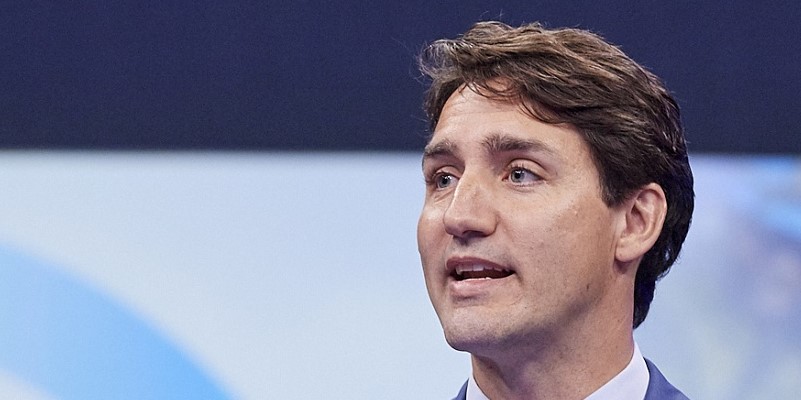Trudeau emissions plan impossible without huge energy costs and/or imports

Prime Minister Trudeau recently announced hard caps on emissions of greenhouse gases (GHGs) for Canada’s oil and gas sector, which will decline over time to help achieve Ottawa’s goal of net-zero emissions by 2050. As is so often the case with the current government, there are serious questions that have not been asked—let alone answered—about this new policy and its consequences for Canadians.
It’s first important to understand that the design of the cap on emissions, at least given current information, is to restrain current levels of production and gradually reduce them over time. In other words, they’re designed to limit increased production and expansion of the oil and gas sector in Canada.
Based on the latest data from Statistics Canada, the oil and gas sector represents 26.2 per cent of Canada’s total GHG emissions. The remaining emission sources are exempt from the cap. It’s not clear why the production of GHGs in the oil and gas sector are more harmful or damaging to the environment or the economy than GHGs produced in other sectors.
Moreover, given population growth and increases in income, the demand for goods and services that generate GHGs across all sectors, including oil and gas will increase. So unless there are breakthrough technologies, which the government is counting on, emissions will also increase. In other words, it’s not clear how constraining one-quarter of GHG sources (the oil and gas sector) can help achieve net-zero emissions by 2050 if emission levels from the other three-quarters are growing.
This leads to one interesting but unanswered question regarding home energy consumption, which includes heating and cooling homes, preparing meals and providing energy for the comforts of life. According to the latest available data from Statistics Canada, in 2015, 51.0 per cent of home energy consumption was provided by natural gas, 45.2 per cent by electricity and 3.8 per cent by heating oil. If the government constrains oil and gas production, and the population continues to grow, a marked shift to electricity must occur, particularly with respect to heating homes.
Once again, the government has provided no information about who will pay these enormous costs or where all the new electricity will be produced. There’s a real possibility that Canadian families will have to pay to remove natural gas and oil-fired furnaces and replace them with electric heating systems, and that the cost of electricity will increase. Indeed, Canadians will likely bear these significant costs in the near future but there’s been no disclosures or information. Ottawa continues to present these decisions as if they’re costless.
This brings us to the question of GHG reductions in the transport sector, which is the second-largest source of GHGs in Canada at 25.4 per cent (2019). The Liberal campaign platform in 2021 called for half of all “passenger” vehicles sold in Canada to be zero-emissions by 2030 and all must be zero by 2035. According to Statistics Canada, in 2020, there were 1.5 million new vehicle registrations and 39,036 (or 2.5 per cent of the total) were electric-battery vehicles (the percentage increases if hybrids are included but they’re potentially emitting vehicles). As McGill economist William Watson notes, when the analysis only includes “passenger” vehicles, the numbers drop to 498,031 total registrations and 28,007 electric-battery vehicles (or 5.6 per cent of the total).
It’s not clear how Canada moves from 1-in-20 vehicles being zero-emissions in 2020 to 1-in-2 within 10 years and 1-in-1 in 15 years. And again, it’s entirely unclear how all the new electricity to power these vehicles will be generated.
Recall that there’s likely a transition in how we heat our homes, cook our meals and basically live our lives that will require significantly more electricity. Is the government’s plan to build new nuclear plants and/or more dams, both of which are zero-emitting sources of electricity? Or perhaps the plan is to build significantly more wind and solar, and if so, what will be the backup energy source, given that it’s not always windy or sunny?
Or perhaps the government assumes it will import electricity from the United States. If so, it must be specific about how such imports will be net-zero, particularly given that Canada would likely move from an exporter of energy to an importer, which would have broad economic implications for the country.
These are only a few of the many, many questions raised by Prime Minister Trudeau’s announcement in Glasgow, which Canadians deserve answers to before proceeding.



